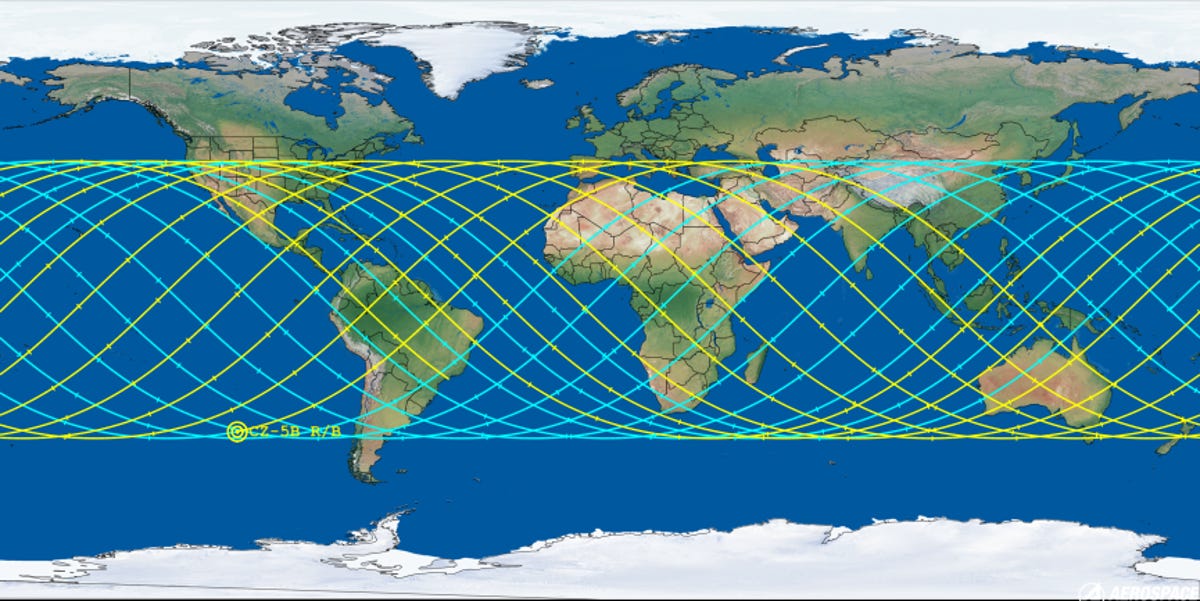China is building up its space station in orbit and litter from the flying construction site over our heads is set to fall all the way back to the surface of our planet again this week.
For the third time in the past two years, China’s space program has sent a large module to orbit to expand its Tiangong space station using a Long March 5B rocket, which appears to lack the hardware to make a controlled reentry and steer itself toward a safe splashdown in a remote part of the ocean.
Instead, the spent rocket booster weighing over 20 metric tons is expected to largely burn up as it sizzles through the atmosphere. But it’s likely some of the larger components and other debris will survive all the way to the surface. Currently, this atmospheric reentry is expected to happen sometime during a 28-hour window that begins Friday evening, Pacific time, and runs through most of Saturday, according to predictions from the Aerospace Corporation, which tracks orbital reentries.
“The uncertainty of where the large debris will ultimately land presents a level of risk to human safety and property damage that is well above commonly accepted thresholds,” the company wrote in a statement.
The rocket was used to send Mengtian, the third and final section of Tiangong, to orbit for installation on a launch that took place Monday. The booster is roughly the size of a 10-story building.
Similar reentry risks were seen with the launch of the previous two Tiangong space station modules as well, with a spent rocket landing in the Indian Ocean on May 8, 2021, and another breaking up over Malaysia, Indonesia, and the Philippines on July 30, 2022. Another Long March 5B mission also led to debris falling on western Africa in 2020.
Over the next two days, we can expect that predicted reentry window duration to shorten considerably as space watchers track the decay of the empty rocket’s orbit and get a better idea of when it will finally submit itself to the pull of Earth’s gravity.
When it does begin its short and fiery trip back to Earth’s surface, there’s no real way of predicting where it will end up. The debris field left by a rocket reentry with this much mass can leave bits and piece strewn over a debris corridor stretching dozens or even hundreds of miles long.
The last time one of these spent boosters fell back to Earth, in late July, it broke up over Malaysia and chunks of it were later found on the ground both there and in Indonesia.
Falling space junk has damaged property, but there has never been a report of human injuries or death. Earth’s population distribution makes it most likely any trash making it all the way from orbit to the surface ends up either in the ocean or someplace remote (rural Australia seems popular). That said, this booster is completely out of control and could end up depositing parts of itself anywhere along its flight path.
At the moment, the potential flight path for reentry covers a pretty wide swath of Earth including most of the United States, China, India, Southern Europe, South America, Africa and Australia. Basically, if your latitude is higher than that of France or Portland, Oregon, you’re probably in the clear. Again, we’ll know more about the flight path in the hours right before predicted reentry.


The spent booster’s flight path over the next few days.
Aerospace Corporation

